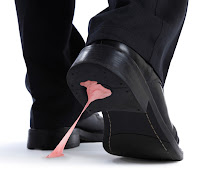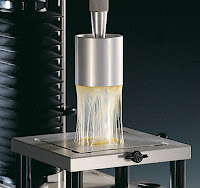 The development of Texture Analysers has opened up a wealth of opportunities for adhesive testing and analysis.
The development of Texture Analysers has opened up a wealth of opportunities for adhesive testing and analysis. Most recently the ability to replay, freeze-frame and share your product testing data using a Video Capture and Synchronisation System has been introduced. This is a fantastic tool for teaching others about the nature of your product and for those new to the field or, more importantly, to help you gain a frame-by-frame understanding of your product failure.
VIDEO CAPTURE & SYNCHRONISATION
Capturing tests on video alongside traditional adhesive testing can be a real advantage to texture analysis users.
Events in an experiment can be easily missed by the human eye, whether due to the speed of the test or to the physical structure of the sample; adhesive separation, for example, can occur very quickly.
However, matching up visual and graphical information after a test can be awkward if the data are not synchronised. For example, correlating peaks and troughs on a force-distance-time graph to specific moments in the test can be tricky, even if the video of the experiment is faultless. This is especially the case where a product has an uneven texture or a complex breaking pattern.
Stable Micro Systems’ Video Capture & Synchronisation System enables texture analyser users to replay 50fps video recordings frame by frame, simultaneously with the corresponding force-distance-time graph.
All the collected data is processed by the latest version of Exponent software– supplied with the TA.XTplus texture analyser. As the instrument begins collecting test data, a signal is relayed to the Video Capture Interface that initiates the video recording.
Each frame is automatically synchronised with the data points on the graph, allowing slow replay of those frames that record a significant event, but which may not be easily seen by the naked eye in real time. This enables the exact relation of graph events to visual events on the product.
The test platform with camera mounting points fits easily to the test bed of the TA.XTplus Texture Analyser. The camera on its flexible arm can be positioned above or directly to the side of the test sample, but may also be mounted below the transparent window of the test platform, with additional illumination in any case being provided by the optional multiple-LED lighting arrangement.
Click here to find out more about this new technology...
INCREASING SAMPLE THROUGHPUT VIA TEST AUTOMATION
Another one of the most useful attributes of modern instruments for tack testing is the capacity for indexing.
This allows multiple tests to be conducted on one sample length, which highlights qualitative variations but also enables faster sample throughput.
You can now experience the benefits of a texture analysis system which combines the facility for multiple loading of samples and their subsequent testing with ‘walk-away’ time for the duration of all the tests.
If high volume, repetitive testing is causing a bottleneck in your operation, automating to meet critical deadlines can be a business imperative. An investment in automation can be justified for a number of reasons, all of which directly impact your laboratory’s contribution to profit.
The Automated Linear Indexing System (ALIS) enables the loading of multiple test samples prior to testing and does not require constant supervision by the user during testing. It is integrated seamlessly with a TA.XTplus texture analyser with quick and easy set-up and sample mounting.
Test specimens are located in bespoke support plates. Then, with prompted steps, testing conditions are set, tests are performed, and results are reported with little or no operator involvement. This means that skilled technicians are free to perform more sophisticated tasks while accurate, repeatable testing information is generated automatically. Automation of the testing process increases productivity, eliminates operator error and improves operator safety.
The Automated Linear Indexing System is available with two optional platform lengths – 250mm or 600mm. The platform may be moved in steps, pausing for each indexed test of multiple samples, or moved at a constant speed exactly matched to the movement of the texture analyser’s arm. This is ideal, for example, in peel testing of a single adhesive material strip.
Click here for more details...
While enabling multiple tests of each sample, the Automated Linear Indexing System also provides the ability to carry out a 90 degree peel test comprising multiple speed elements. This is of particular interest to developers in the adhesives industry; since assessment of adhesive peel at any particular speed would normally require one complete test. The ALIS method offers the clear advantage of faster sample throughput; and crucially, the effect of the speed variations is shown and analysed within one graph.
To prepare for testing, the user applies the adhesive sample strip to the sample platform using a controlled application technique. Next, the end of the strip is attach to the texture analyser arm using a tensile grip. Finally, for each section of the test, the peel distance and speed at each distance (from 0.01 to 40mm/s) is chosen, the settings for these operator-defined stages being configured into a single test.
During the test, the sample strip is peeled continuously, but with a change of speed as each defined distance is reached. Force, distance and time results are plotted onto a graph, with a macro applied to the graph analysing the peel data for each test stage.
In addition, the facility to add customisable operator prompts allows any necessary warning messages or instructions to the user to be provided.
Click here to find out more on www.stablemicrosystems.com...
Or click here to view our video...
THE FUTURE OF THE ADHESIVES INDUSTRY
The value of the world market for adhesives and sealants is set to expand at an annual pace of around 4.5% over the next few years, reaching $40 billion and $9.5 billion, respectively, by 2023.
Opportunities abound across an array of industries, from packaging, construction to medical development and electronics manufacturing.
Global automobile production is likely to cross 100 million units by 2018. Increasing plastic and polymer use in vehicles, in order to reduce weight for enhancing efficiency will most likely drive adhesives and sealants market size. Meanwhile, pressure sensitive applications dominate the glue demand with valuation over USD 6.2 billion in 2015. These are most commonly used with no water or heat treatment in applications such as pressure sensitive tapes, labels, note pads and automobile trim.
There is a strong R&D focus to develop and commercialise the bioadhesive market using novel feedstock such as soybean polyols, vegetable oil polyamides, polyisoprenes and epoxies, which could result in a paradigm shift and change the product matrix significantly.
Proven high performance, consistent manufacture quality and the development of new adhesives will allow adhesive manufacturers to compete successfully.
However, as pressure on quality control and R&D labs steps up, it is essential to be able to assess accurately adhesive properties and strength to determine the ideal components of an adhesive and so optimise its performance. Today, quality is becoming the key factor for success – there is simply no scope for guesswork of approximations.
 The fact that there are so many industry-approved test methods for adhesives and adhesive tapes indicates the increasing emphasis on product standardisation, quality and performance. Although this phenomenon is common is most modern industries, it is of particular importance to the adhesive industry because of the diversity of applications and sophisticated requirements: resistance to UV, chemicals and extreme weather, waterproofing, fire-proofing and safe use on the human body, to name but a few.
The fact that there are so many industry-approved test methods for adhesives and adhesive tapes indicates the increasing emphasis on product standardisation, quality and performance. Although this phenomenon is common is most modern industries, it is of particular importance to the adhesive industry because of the diversity of applications and sophisticated requirements: resistance to UV, chemicals and extreme weather, waterproofing, fire-proofing and safe use on the human body, to name but a few.If you are an existing customer and would like to take advantage of our latest adhesion testing article giving advice on overcoming difficult adhesive test issues, please click here...
We can design and manufacture probes or fixtures for the TA.XTplus texture analyser that are bespoke to your sample and its specific measurement.
Once your measurement is performed, our expertise in its graphical interpretation is unparalleled. Not only can we develop the most suitable and accurate method for the testing of your sample, but we can also prepare analysis procedures that obtain the desired parameters from your curve and drop them into a spreadsheet or report designed around your requirements.
For more information on how to measure texture, please visit the Texture Analysis Properties section on our website.
 The TA.XTplus texture analyser is part of a family of texture analysis instruments and equipment from Stable Micro Systems. An extensive portfolio of specialist attachments is
available to measure and analyse the textural properties of a huge range of
food products. Our technical experts
can also custom design instrument fixtures according to individual
specifications.
The TA.XTplus texture analyser is part of a family of texture analysis instruments and equipment from Stable Micro Systems. An extensive portfolio of specialist attachments is
available to measure and analyse the textural properties of a huge range of
food products. Our technical experts
can also custom design instrument fixtures according to individual
specifications.No-one understands texture analysis like we do!
To discuss your specific test requirements click here...
|







No comments:
Post a Comment